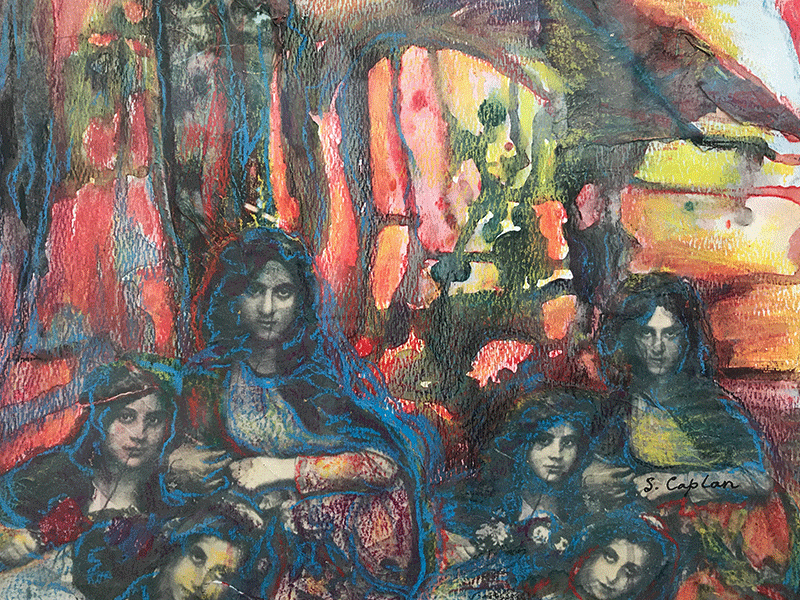Shushana Caplan, a visual artist based in Montreal, had an unusual early childhood: she spent the first four years of her life in a gulag in Siberia.
Caplan, 78, was born in Brest-Litovsk, an area of Poland acquired by Russia in 1939. Her parents sought asylum there, but like other Jewish refugees, they were sent to Siberia for the duration of the war.
They travelled with a packet of family photographs. Now, Caplan has incorporated reproductions of those photos into mixed-media dreamscapes that tell the story of her family’s journey, from the shtetl and what she calls their “enslavement” in Siberia to their arrival in Canada.
READ: WOMAN CHRONICLES HER JOURNEY AWAY FROM ORTHODOXY
These works make up the latest exhibition mounted by the Reuben and Helene Dennis Museum at Beth Tzedec Congregation in Toronto. The show, titled Raizel’s Journey after Caplan’s given name, runs until Oct. 5.
“I used these photos to create these collages,” Caplan said. “I felt my paintings would be a powerful way to convey the message of my parents’ suffering in Siberia. The photographs put a human face on this story.”
The art show opened on May 6 with pizzazz. People viewing Caplan’s works were treated to a musical performance by her friend Jerry Gray, a founding member of the celebrated Canadian folk group the Travellers.

Gray played banjo and sang some partisan songs in Yiddish, evoking memories of the old-world theme of Caplan’s exhibition and the spirit of the underground Jewish partisan fighters.
Caplan has been painting and teaching art in Montreal for more than 30 years. She said the mixed-media paintings are autobiographical.
In the description of the art show, she writes, “It is my legacy to describe the journey of my younger self, Raizel, to the next generation, my children and their children.”
She said her father had been in the Polish army in 1939, but with the German occupation of Poland, he instinctively knew that his family’s only chance of survival was to leave his hometown of Mezrycz.
He and most of his siblings and his wife’s siblings took refuge at his brother’s home in Brest-Litovsk, a Polish city that fell under Russian rule as a result of the German-Soviet Non-aggression Pact of 1939.
Caplan said her grandparents refused to leave Nazi-occupied Poland, but many other family members joined her parents and survived the war.
She said Josef Stalin questioned the loyalty of the one million-plus Polish refugees in Russian-controlled territory, so he sent them to the gulags in Siberia. Only half those people survived, but they were the largest group of Jewish survivors in Europe.
Caplan recounted how, en route to Siberia, they were all locked in cattle cars. “We were packed in there like sardines. I don’t know how my parents managed to keep me alive.”
Caplan’s parents recorded their experiences on audiotape. “A lot of the details of what they went through I used in the stories that I wrote to go with the paintings,” Caplan added.
“They endured intolerable conditions. The weather was freezing, the work was back-breaking and they lived on the brink of starvation,” she said. “I was not expected to survive.”
Indeed, she said she had whooping cough, diphtheria, pneumonia and even malaria while in Siberia.
After the war, she and her parents, along with her new brother, Harry – born in Ukraine in 1945 – went to a displaced persons (DP) camp in Germany. The family immigrated to Canada in 1948.
Caplan’s grandparents did not survive the war. “All that remains of their history are the packet of faded and scratched photographs that my parents managed to save, and what we remember of the stories they told me and my brother.”
She said the photographs are “priceless mementos” that her parents carried with them on their journey from Poland to Siberia, and later to Ukraine, the DP camp and Montreal.
“These photos are the only thing that survived from their life in Poland. That is my heritage.”






